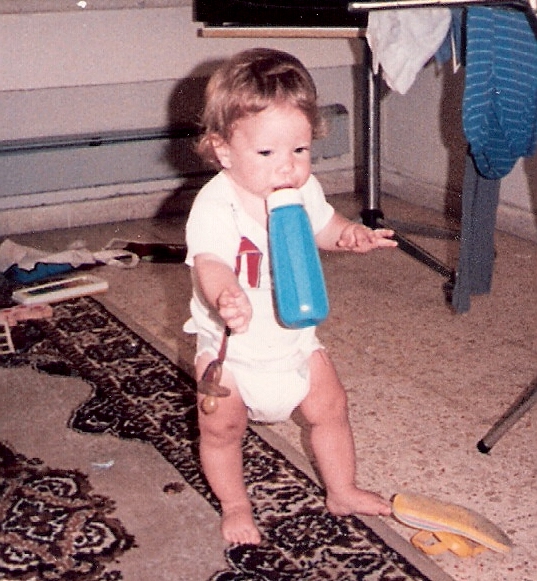We noticed early on that our fourth child, Shua, was left-handed. He was a bright and active child who walked at 9 months and learned to read English, his second language, on his own, at the age of 4. As far as we were concerned, the only accommodation he needed was at table, where it made sense to seat him on the end.

When Shua, now 28, recently spent some time with us, I set his place at the end of the table, as usual. That's when it dawned on me that we'd never really discussed his handedness. He had always coped so well. I wondered if he had struggled and didn't realize his struggles had been significant enough to note. Later that evening, as I sat at my computer, I researched the subject of handedness.
I read in detail all the ways in which Shua would have found the world a challenge -- how even scissors are tailored to the other (right-handed) 90% of the world.
I wondered what my son might have missed out on because of his left-handedness. "Guitar," he said. "I would have liked to learn guitar, but it's just too hard without a left-handed guitar."
I'd never known he wanted to play guitar. I'd never known there was such a thing as a left-handed instrument.
Intrigued, I discovered that just as left-handed schoolchildren are rarely mentored in the classroom, so, too, left-handed surgeons are rarely mentored during their residencies. I spoke to Dr. Gershon Zinger, a hand surgeon formerly on staff at Jerusalem's Hadassah Ein Kerem Hospital and now at Shaarei Tzedek Hospital in Jerusalem. Dr. Zinger discovered rather quickly during his orthopedic residency that all surgical instruments are right-handed. This posed a problem not only when he used a scissors for cutting knots but when using needle holders, too.

"This is important because you have to open and close it and it's only meant for the right hand. They expect you to sew faster and faster during your residency. I got some flack because it took me longer to master.
"During my second year, the year you really learn to operate, I decided to buy a left-handed needle holder. It took three months to arrive and that was by special order. It cost me $300," said Zinger.
"It worked like a charm during that first surgery, but when I finished operating I had to hand in the needle holder to be sterilized. So I hand it in and tell them to sterilize it and give it right back to me. Of course, it took all of a week for them to lose it," he said.
"And that was it. I realized it was futile for me to try to learn with my own single needle holder so I gave up and learned to use a right-handed one," said Zinger.
Dr. Zinger figured it out early on: It's a right-handed world. He suggested I try using a scissors with my left hand to see what it's like.
I tried cutting a piece of paper while holding a pair of scissors in the wrong hand, my left. Just as Dr. Zinger said, doing so took away the basic function of the instrument and caused the blades to push away from each other instead of meeting and meshing. It took me several tries until I made a clean cut. I figured it out: I had to hold the scissors at a 45 degree angle, something unnecessary when using the scissors with my (proper) right hand.
If you have a left-handed child, it's unlikely he'll receive any special writing help in the classroom. Current thought is to allow the child to use his left hand instead of his right. But that's really not good enough.
A left-handed child must push, instead of pull the pencil across the page. The result is messy, smudged work which can frustrate a child and make him anxious. A far better course is to teach him the correct left-handed writing position:
The paper is rotated to 45 degrees, with hand and wrist below the writing. The pencil should be held in a strong, 3-point grip. A pencil or pen with a triangular body or a regular pencil with a molded rubber grip can aid in providing the proper grip.

Left-handed children sometimes use a hooked grip, which involves angling the pencil as for right-handed writing, in order to avoid smudging. This unnatural writing position leads to achy hands and messy writing. The wrist should always rest below the line of writing. If your child tends to use the hooked grip, try offering a sloped surface to help overcome this issue.
Some left-handed children will attempt mirror writing, beginning from the right side of the page and writing from right to left. Encourage your left-handed child to begin from the left side of the page by placing a star sticker in the left-hand margin.
Most of all, make sure your child gets the help with writing he needs -- if not in school then at home or in an after-school program such as those sponsored by car donation program Kars4Kids. It's a right-handed world. But you can give your child the helping hand he needs.